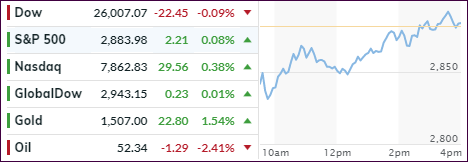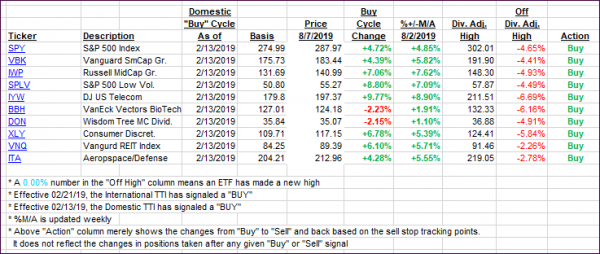
- Moving the markets
The markets lucked out, as an early sharp sell-off found some footing, after which buyers stepped in to scoop up assets at lower prices with all losses being wiped out by the end of the session. Whether that was just a one-day outlier, or a resumption of the bullish trend, remains to be seen.
The Nasdaq led the major indexes, with the S&P barely moving into the green, while the Dow was left behind and remained a fraction in the red.
Bond yields took a sharp dive early on with the 10-year touching 1.62%, then recovering and ending up 1 point at 1.72%. Still, it appears the race to the bottom is on, meaning that yields eventually may end up in negative territory.
On a global scale, we know that some $14 trillion of bonds, or 25% of the market, are yielding negative rates already. At one point in the past, this was considered a short-term aberration but now has become an accepted (outside the US) common practice. This is simply insanity and will not end well.
The recent surge in volatility can have a devastating effect on equities, which one portfolio manager summed up as follows:
“An extended period of low volatility like we have seen in recent years significantly increases leverage and risk-seeking behavior,” he said in an interview.
“When volatility turns like it has, people often need to sell assets to meet margin calls. That’s what makes this so combustible.”
With the actions of the last week, investor sentiment has collapsed from “euphoric greed” just a month ago to “extreme fear,” as this chart shows (thanks to ZH).
Even on a global basis, stocks and bonds remain decoupled by a huge margin. Knowing that bonds represent the “smart money” and stocks the “dumb money,” we can guess well how this will turn out.
It pays to have an exit strategy.
2. ETFs in the Spotlight
In case you missed the announcement and description of this section, you can read it here again.
It features 10 broadly diversified and sector ETFs from my HighVolume list as posted every Saturday. Furthermore, they are screened for the lowest MaxDD% number meaning they have been showing better resistance to temporary sell offs than all others over the past year.
The below table simply demonstrates the magnitude with which some of the ETFs are fluctuating regarding their positions above or below their respective individual trend lines (%+/-M/A). A break below, represented by a negative number, shows weakness, while a break above, represented by a positive percentage, shows strength.
For hundreds of ETF choices, be sure to reference Thursday’s StatSheet.
For this current domestic “Buy” cycle, here’s how some our candidates have fared:

Again, the %+/-M/A column above shows the position of the various ETFs in relation to their respective long-term trend lines, while the trailing sell stops are being tracked in the “Off High” column. The “Action” column will signal a “Sell” once the -8% point has been taken out in the “Off High” column. For more volatile sector ETFs, the trigger point is -10%.
3. Trend Tracking Indexes (TTIs)
Our Trend Tracking Indexes (TTIs) barely changed, and I will still hold off on the potential International ‘Sell’ signal until I get more directional confirmation.
Here’s how we closed 08/07/2019:
Domestic TTI: +2.46% above its M/A (prior close +2.32%)—Buy signal effective 02/13/2019
International TTI: -0.86% above its M/A (prior close -0.86%)—Buy signal effective 06/19/2019
Disclosure: I am obliged to inform you that I, as well as my advisory clients, own some of the ETFs listed in the above table. Furthermore, they do not represent a specific investment recommendation for you, they merely show which ETFs from the universe I track are falling within the specified guidelines.
Contact Ulli